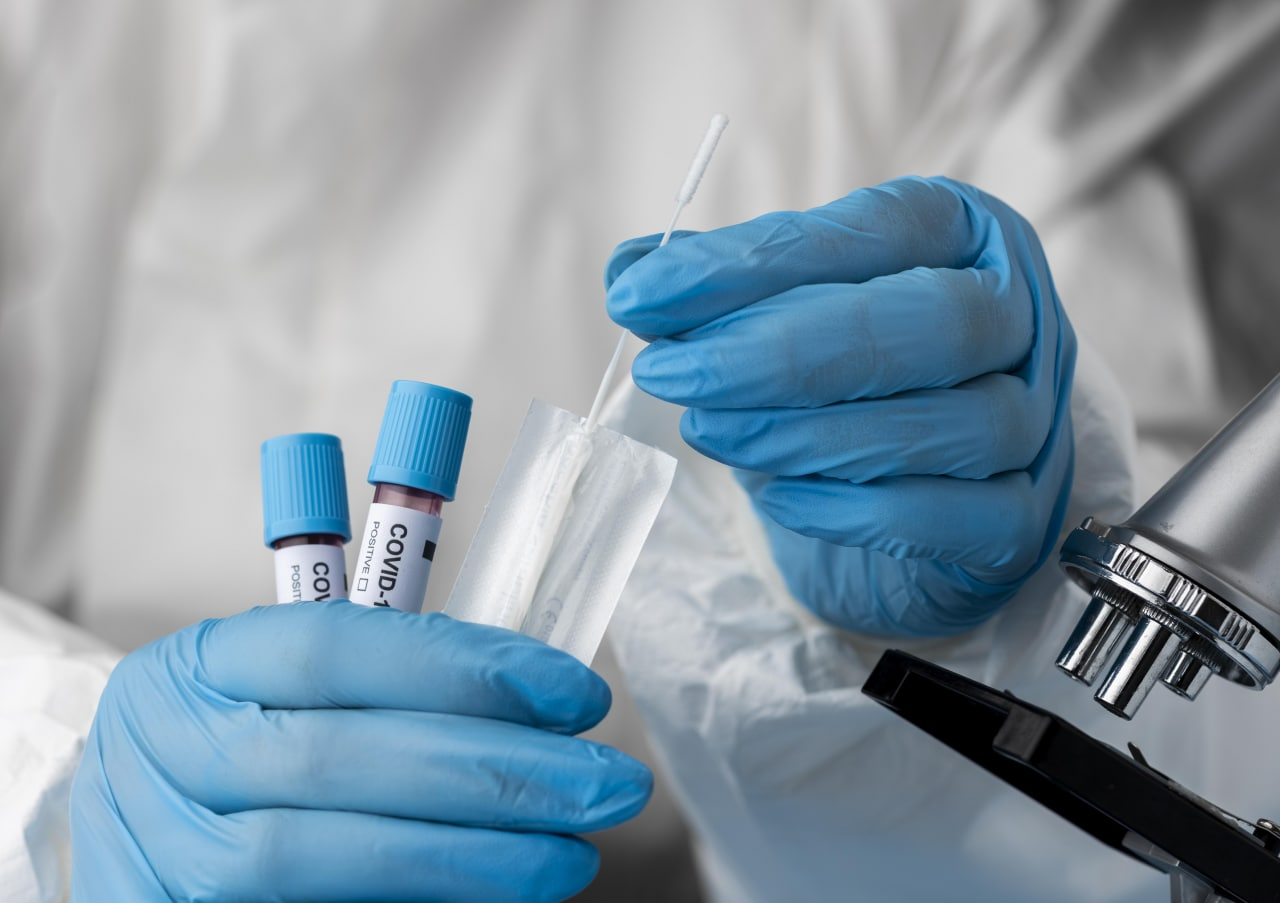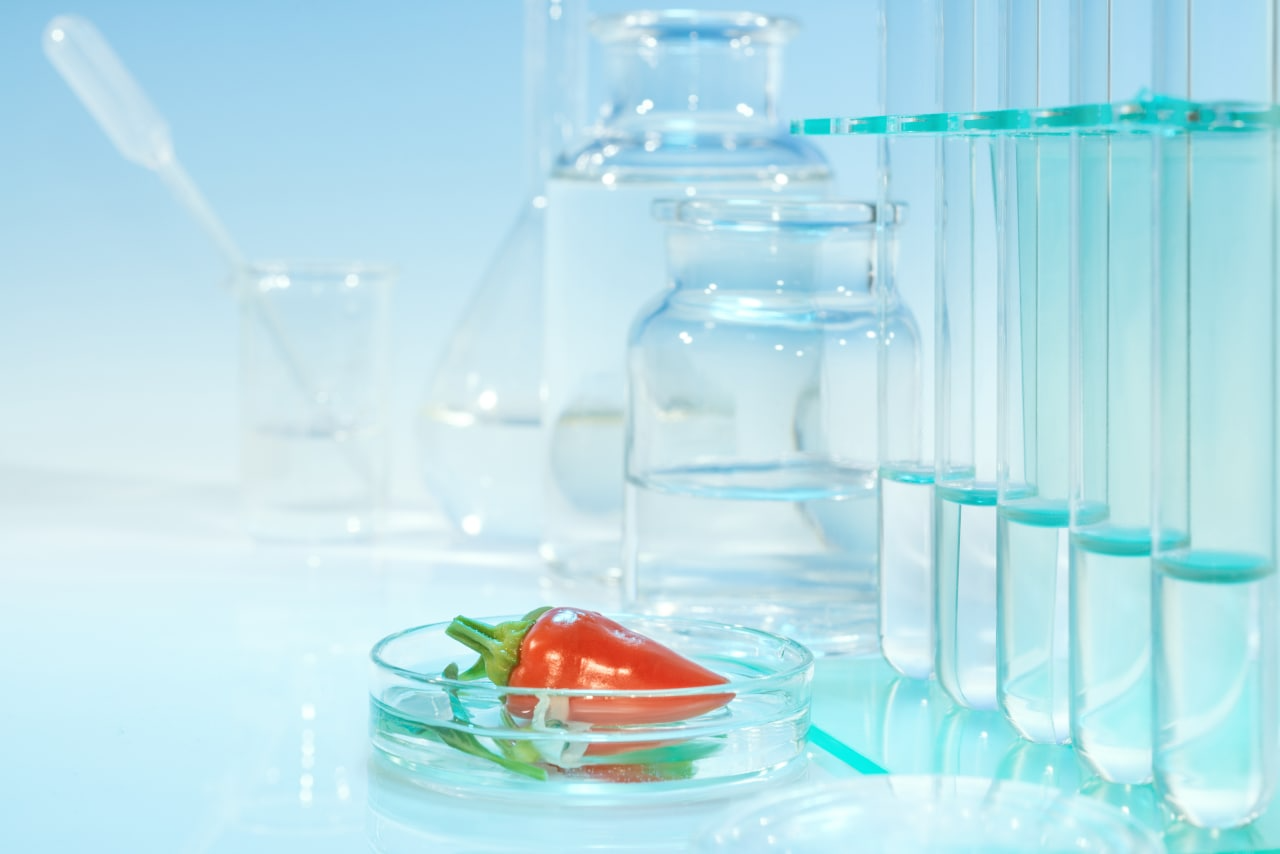LATEST DATA ON THE SARS-CoV-2 VIRUS AND COVID-19 INFECTION
New data on biological characteristics of the new SARS-CoV-2 coronavirus, its effects on organs and tissues have been appearing in the world medical journals recently. Clinical course options of the COVID-19 disease caused by it are being studied. This review will focus on some of these publications.
It is known that the SARS-CoV-2 coronavirus has several antigens on its surface, which are recognized by the body's immune system: nucleocapisde N protein, membrane protein M, membrane protein E, and the most important antigen the spike protein (S-protein), which interacts with angiotensin-converting enzyme 2 (ACE2 receptor) on the epithelial cell membrane. [1].

High expression of ACE2 was identified in type 2 alveolar cells producing lung surfactant, as well as in the esophagus epithelial cells, the ileum and small intestine enterocytes, the gallbladder and bile ducts cholangiocytes, myocardial cells, proximal tubules cells of the kidney and the urinary bladder cells. Moreover, ACE2 is expressed in the oral mucosa lymphocytes and identified in various eye structures[2].
Chinese authors discovered that ACE2 expression increases significantly during pregnancy, which may contribute to greater susceptibility to SARS-CoV-2 in pregnancy. The research, which analyzed the susceptibility to SARS-CoV-2 in pregnancy and drugs that can be used to treat COVID-19 in pregnancy, showed that interferons have strong antiviral effect on SARS-CoV-2, but interferon α2 begins to exercise these effects at a dosage 1000 IU / ml and over. The authors also showed that no significant difference in mortality rates between patients infected with the SARS-CoV-2 virus and taking IFN-β1A and IFN-a2a drugs (P = 0. 24) was observed [3].
Italian researchers have demonstrated IFN-α does not significantly increase malformations, miscarriages, stillbirths, or premature births risks. IFN treatment safety in pregnancy is also confirmed by larger studies on patients with multiple sclerosis who took type I IFN in early pregnancy, which have not identified any increase in the number of spontaneous abortions and birth defects [4].
Recent studies of coronavirus have revealed that there is a truncated version of ACE2, which is called deltaACE2 (dACE2), and this truncated version does not bind the SARS-CoV-2 S-protein. Interferon proteins induce ACE2 truncated form expression in various human cells and tissues. Whilst interferons do not induce full-length ACE2[5].
Recently a group of specialists from the People's Republic of China has identified a new way of coronavirus penetration into the bronchi and lungs healthy cells. The results of their experiments showed that not only the ACE2 protein, but also the tyrosine-protein kinase receptor (AXL), which specifically interacts with the N-terminal domain of the SARS-CoV-2 virus, can be a"gateway" to a living organism for the coronavirus. AXL overexpression in cells induces SARS-CoV-2 penetration as efficiently as ACE2 overexpression[6].
Scientists from Hong Kong have found that the SARS-CoV-2 coronavirus similar to HIV is capable of targeting immune cells and infecting them, T-lymphocytes amongst others. The researchers discovered the unique coronavirus protein structure causing the viral envelope and cell membrane attachment when they interacted. Then the virus genes penetrated the T-cell and “took it hostage” at the same time “turning off” the immune function [7].
Indian bioinformatics have discovered new coronavirus protein segments that are similar to those of the human immunodeficiency virus (HIV). Scientists have found 4 inserts in the coronavirus glycoprotein protein (the S-protein) which are unique to 2019-nCoV and not found in other coronaviruses. Moreover, the amino acid residues in all 4 inserts are identical or similar to residues in the HIV-1 gp120 or HIV-1 Gag proteins, the key human immunodeficiency virus structural proteins [8].
Pathogenesis of organ injury in COVID-19 occurs due to three groups of interrelated factors that form a vicious pathological circle: the first factor is the cytopathic damaging effect of the virus on tropic cells; the second factor can be called a cytokine storm having a damaging effect on tissues and blood vessels and providing an inflammatory reaction and coagulopathy with the recruitment of leukocytes, macrophages, and lymphoid elements to the damaged cells; the third factor is coagulation disorders due to injury to the vascular endothelium and liver cells with thrombosis and hemorrhage development [9].
It has been concluded that there are 2 the SARS-CoV-2 virus serotypes, those are more lethal S-type and more aggressive L-type. After having analyzed 160 samples of the SARS-CoV-2 virus genome from patients, scientists have found that there are three genetic versionsof this virus. The versions which have been labeled ‘A’ and ‘C’ are found in Europeans and Americans. Version ‘B’ virus is most common in East Asia. It does not spread to other regions of the Earth without mutations turning it into derived types, which indicates a possible viral resistance to this type outside Asia [10].
%200000.png)
During viral phylogenesis the new coronavirus has learned to use numerous suppressing interferonogenesis and evading the immune response mechanisms. The SARS-CoV-2 virus induces a strong pro-inflammatory cytokine response in the respiratory tract epithelial cells, but blocks the type I and III interferons production. At the same time the virus is sensitive to interferons, which indicates their potential effectiveness for the coronavirus infection treatment. In addition, scientists have found that COVID-19 disrupts the plasmacytoid dendritic cells functions that produce type I interferons [11-17].
Swedish researchers led by Christopher Maucourant studied the role of the innate immune interferon response in large cytotoxic lymphocytes - normal killer cells (NK). Using 28-color flow cytometry, the authors showed that the interferon response was stronger in NK cells from patients with moderate COVID-19 disease, and the severe form of COVID-19 was associated with a weakened response [23].
Finally, US scientists’ a study has shown that cigarette smoke blocks the interferon antiviral response. Cigarette smoke suppresses the innate immunity of the mucous membranes, which leads to increased viral replication. This causes the degradation of type I interferon receptors, as well as suppression of type II interferon-dependent gene expression. Smoking also increases the ACE2 and other receptors expression. It was demonstrated that after treatment with cigarette smoke the expression of genes that are normally activated by interferons IFIT1, IFIT2, IFIT3, IFI44L decreases in cells[24].
This circumstance indicates the importance of treatment with interferon drugs as prophylactic and therapeutic agents for COVID-19 infection.
References:
- Yan R., Zhang Y., Li Y., Xia L., Guo Y., Zhou Q. Structural basis for the recognition of SARS-CoV-2 by full-length human ACE2 // Science 27 Mar 2020:Vol. 367, Issue 6485, pp. 1444-1448.
- Xu H., Zhong L., Deng J., Pang J. High expression of ACE2 receptor of 2019-nCoV on the epithelial cells of oral mucosa // International Journal of Oral Science. -2020, -V. 12, Article number 8.
- Zhao X., Jiang Y.,ZhaoY., Xi1 H., Liu Ch.,et al. Analysis of the susceptibility to COVID-19 in pregnancy and recommendations on potential drug screening // European Journal of Clinical Microbiology & Infectious Diseases, -2020, V. 39, p.1209–1220.
- Favilli А. et al. Effectiveness and safety of available treatments for covid-19 during pregnancy: a critical review the journal of maternal-fetal & neonatal // Medicine 2020, ahead-of-print, 1-14 https://doi.org/10.1080/14767058.2020.1774875.
- Olusegun O. Onabajo A. Prokunina-Olsson L.et al. Interferons and viruses induce a novel primate-specific isoform dACE2 and not the SARS-CoV-2 receptor ACE2 // bioRxiv, 2020, doi.org/10.1101/2020.07.19.210955 Now published in Nature Genetics doi: 10.1038/s41588-020-00731-9.
- Wang Sh.,Qiu Z.,Hou Y.,Xu W.et al. AXL is a candidate receptor for SARS-CoV-2 that promotes infection of pulmonary and bronchial epithelial cells //Cell Research, 2021 Open Access https://www.nature.com/articles/s41422-020-00460-y#Sec9.
- Wang X. et al. SARS-CoV-2 infects T lymphocytes through its spike protein-mediated membrane fusion // Cellular & Molecular Immunology (2020); DOI: 10.1038/s41423-020-0424-9.
- Pradhan P. et al. Uncanny similarity of unique inserts in the 2019-nCoV spike protein to HIV-1 gp120 and Gag // DOI: 10.1101/2020.01.30.927871.
- Kogan E.A., Berezovsky Y.S., Protsenko D.D., Bagdasaryan T.R., Gretsov E.M., Demura S.A., Demyashkin G.A., Kalinin D.V., Kukleva A.D., Kurilina E.V., Nekrasova T.P., Paramonova N.B., Ponomarev A.B., Radenska-Lopovok S.G., Semenova L.A., Tertychny A.S. Anatomic pathology of an infection caused by SARS-CoV-2. // Sudebnaya meditsina (Forensic Medicine), 2020; 6 (2):8–30. https://doi.org/10.19048/2411-8729-2020-6-2-8-30. (in Russian)
- Forster P. et al. Phylogenetic network analysis of SARS-CoV-2 genomes.// PNAS, -2020, published online doi: 10.1073/pnas.2004999117.
- Smirnov V.S., Totolyan A.A. Innate immunity and coronavirus infection. // Infektsiya I immunitet (Infection and immunity), . 2020, Volume 10, No. 2; https://doi.org/10.15789/2220-7619-III-1440. (in Russian)
- Kikkert M. Innate Immune Evasion by Human Respiratory RNA Viruses. J Innate Immun. 2020;12(1):4-20. doi: 10.1159/000503030.
- Vanderheiden A. et al. Type I and Type III IFN Restrict SARS-CoV-2 Infection of Human Airway Epithelial Cultures. // bioRxiv 2020.05.19.105437; DOI: 10.1101/2020.05.19.105437.
- Konno Y. et al. SARS-CoV-2 ORF3b is a potent interferon antagonist whose activity is further increased by a naturally occurring elongation variant. //bioRxiv, May 12, 2020; DOI: 10.1101/2020.05.11.088179.
- Saichi M. et al. Single cell RNA sequencing of blood antigen-presenting cells in severe Covid-19 reveals multi-process defects in antiviral immunity // bioRxiv, 2020. DOI: 10.1101/2020.07.20.212837.
- Dominguez Andres A. et al. // SARS-CoV-2 ORF9c Is a Membrane-Associated Protein that Suppresses Antiviral Responses in Cells. // bioRxiv 2020.08.18.256776; DOI: 10.1101/2020.08.18.256776.
- Zhang Y. et al. The ORF8 Protein of SARS-CoV-2 Mediates Immune Evasion through Potently Downregulating MHC-I. // bioRxiv, 2020.05.24.111823.
- 20.Konno Y. et al. SARS-CoV-2 ORF3b is a potent interferon antagonist whose activity is further increased by a naturally occurring elongation variant. //bioRxiv, May 12, 2020; DOI: 10.1101/2020.05.11.088179.
- Hadjadj J. et al. Impaired type I interferon activity and inflammatory responses in severe COVID-19 patients. // Science 13 Jul 2020: eabc6027; DOI: 10.1126/science.abc6027.
- Takahashi T. et al. Sex differences in immune responses that underlie COVID-19 disease outcomes // Nature. 2020, DOI: 10.1038/s41586-020-2700-3.
- Maucourant Ch. et al. // Natural killer cell immunotypes related to COVID-19 disease severity // Science Immunology, posted online 21 August 2020; DOI: 10.1126/sciimmunol.abd6832.
- Purkayastha A. et al. Direct exposure to SARS-CoV-2 and cigarette smoke increases infection seerity and alters the stem cell-derived airway repair response. // Cell Stem Cell, - 2020, DOI: 10.1101/2020.07.28.226092 ( bioRxiv.org)







